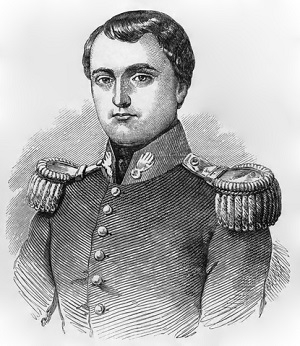


In the 1800s, people in Europe were motivated to strive for more democratic forms of government by nationalism and Enlightenment ideas. In Latin America and the Caribbean, it inspired a rebellion against European control and the drive for independence. When Germany and Italy allied, this was accurate. At the start of the 1800s, neither country was present. They were split up into various smaller states that fought for independence on occasion but also occasionally cooperated. However, the majority of people in these states were united by a common language, culture, history, and religion, all of which fuelled nationalist emotions.
The Italian Peninsula was split up into various city-states after the Western Roman Empire fell in 476 AD. Despite having been momentarily united under the Ostrogothic Kingdom, the Eastern Roman Empire fell back into disarray after the invasion in the 500s.
Beginning in the eighth century, the Holy Roman Empire ruled the northern half of Italy, while the middle and southern halves of the country were alternately ruled by the Kingdom of Naples, the Kingdom of Sicily, and the Papal States.
Until the advent of the Italian city-states, such as Milan and Venice, the situation persisted well into the 17th century. The Holy Roman Empire and the states would engage in wars that would end with the Peace of Westphalia in 1648. Thus, Italy was split up into numerous minor principalities, and this division persisted until the French Revolution began in 1789.

Napoleon Bonaparte started a series of wars toward the end of the French Revolution that would alter the political climate of Europe for years to come. The Italian city-states were subjugated by Napoleon, who unified their administration.
The Italian people would absorb many revolutionary principles, like liberty, equality, and fraternity, while they were a part of the French Empire. Above all, encouraging citizens' active participation in governance was a novelty in the Italian states for centuries. Napoleon's empire, which he built even encouraging nationalism, had fuelled revolutionary ambitions.
After Napoleon's defeat in 1815, Italy would be partitioned once more, this time between the major European powers, with the Empire of Austria holding the most sway over the city-states. But by this point, the Italian people had grown weary of foreign occupation and would launch several uprisings to force the foreigners out and unify their nation.
The drive for unification grew during the 1820s and 1830s, eventually reaching its zenith in 1848 when uprisings broke out in numerous Italian states. The revolutions would be put down, but little was done to stop the wave of revolutionary activity. During this time, Giuseppe Garibaldi would come to represent Italian unification.
Revolutionary Giuseppe Garibaldi was forced into exile after the 1848 uprising, in which he had taken part, failed. He would return to Italy in 1860 and help King Victor Emmanuel II of Piedmont, bringing with him a volunteer army from Sicily and Naples.
Victor Emanuel joined forces with France in 1858 with other northern Italian governments to put a stop to Austrian influence in the area. The 1860 uprising was successful because Garibaldi and his redshirt army took control of Sicily and Naples.
In the meantime, Piedmont-Sardinia had united with the northern nations, and they had crowned Victor Emmanuel II as their King. Garibaldi gave him Sicily and Naples, and by 1861, Italy had been proclaimed a kingdom. Only Venice and Rome would continue to be governed by foreigners, they were annexed by Italy. Thus, Italy's unification was complete.
Even though the reunification took place, the Kingdom of Piedmont ended up under complete dominance. During the early years of the government, the Piedmont ruling class predominated despite pledges that regional authorities would participate equally.
The Italian people desired a unified Italy with strong states and a meagre central authority. They received a powerful central government instead, with the states having little to no influence.
The old Piedmont constitution was the new one. The document was viewed favourably by liberal groups because it was typically liberal. However, pro-clergy groups in Venice, Rome, Naples, and Sicily took exception to this.
Civil conflicts that were violently suppressed were waged in Sicily and Naples during the first ten years of the Kingdom of Italy. Long-term consequences included a system that was heavily politicised and dependent on a violent regional conflict between mutual enemies. They still exist in the twenty-first century.
A political and socioeconomic movement known as Italian Unification brought the many states of the Italian peninsula together in the 19th century to form the Kingdom of Italy. The Congress of Vienna served as the detonator for the process, which started in 1815 and was finished in 1871 when Rome became the capital. The presence of other foreign countries, who were to blame for the state of affairs in Italy, encouraged Italians to work toward unification. The greatest way to sum up the situation in Italy following unification is Professor Serge Hughes' remark that “Now that we have made Italy, we must make Italians.”
Q1. What was the unification of Italy called?
Ans. The sociopolitical movement of the 19th century that brought the many states of the Italian Peninsula together to form the Kingdom of Italy was known as the unification of Italy. The Risorgimento and Resurgence are other names for it.
Q2. How long did it take Italy to unite?
Ans. Italian unification took eleven years, the most significant of which was the 1859–1860 annexation of the majority of Italy by Piedmont–Sardinia. Trento and Trieste, two minor Italian-speaking regions, weren't united with Italy until 1919.
Q3. Who was chronologically the first to begin Italian unification?
Ans. The Napoleonic Wars in the 1820s led to the emergence of organisations working to unite Italy. The Giuseppe Mazzini-founded Young Italy movement was the most significant. Due to the efforts of Piedmontese leaders, particularly Prime Minister Cavour and King Victor Emmanuel II, assisted by French Emperor Napoleon III, Italian unification was finally successfully achieved in 1860.